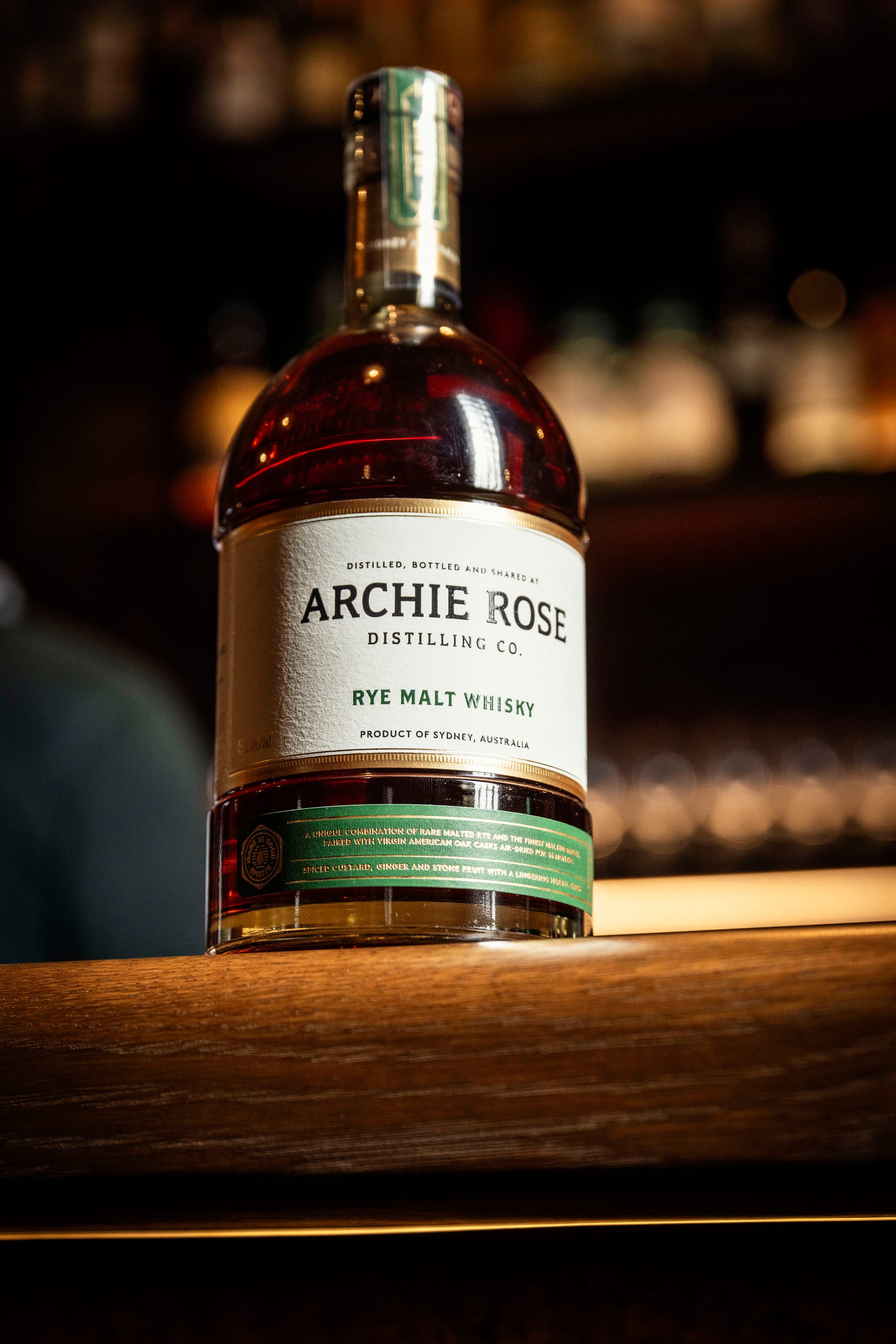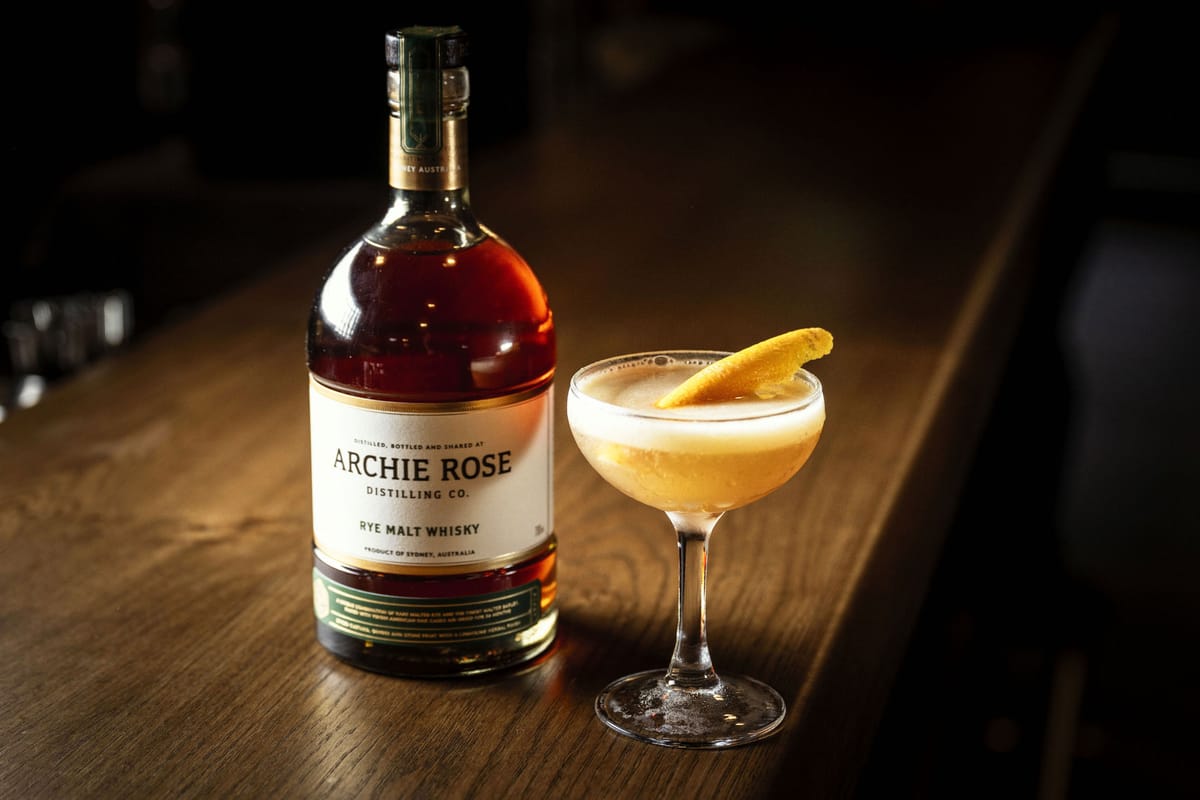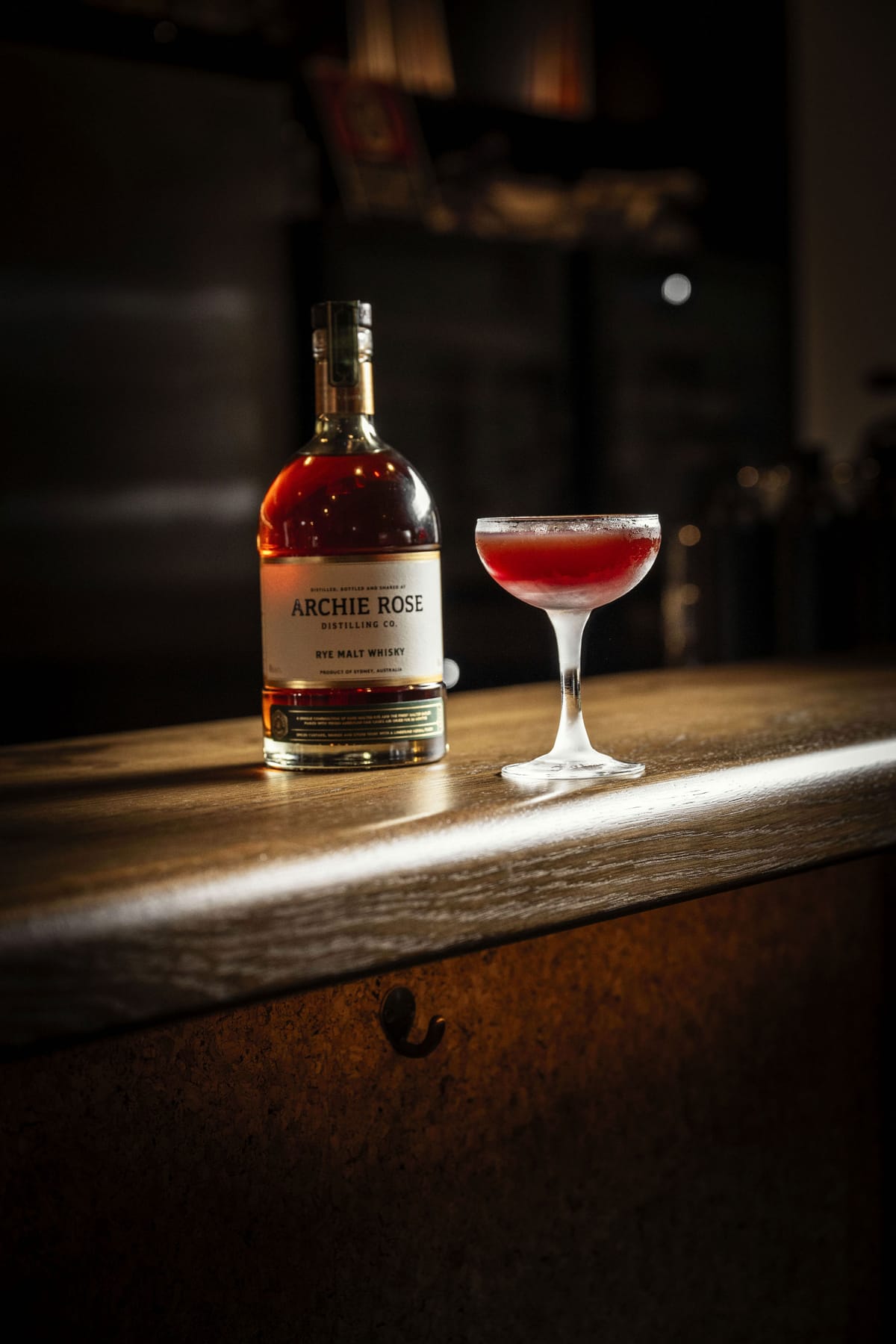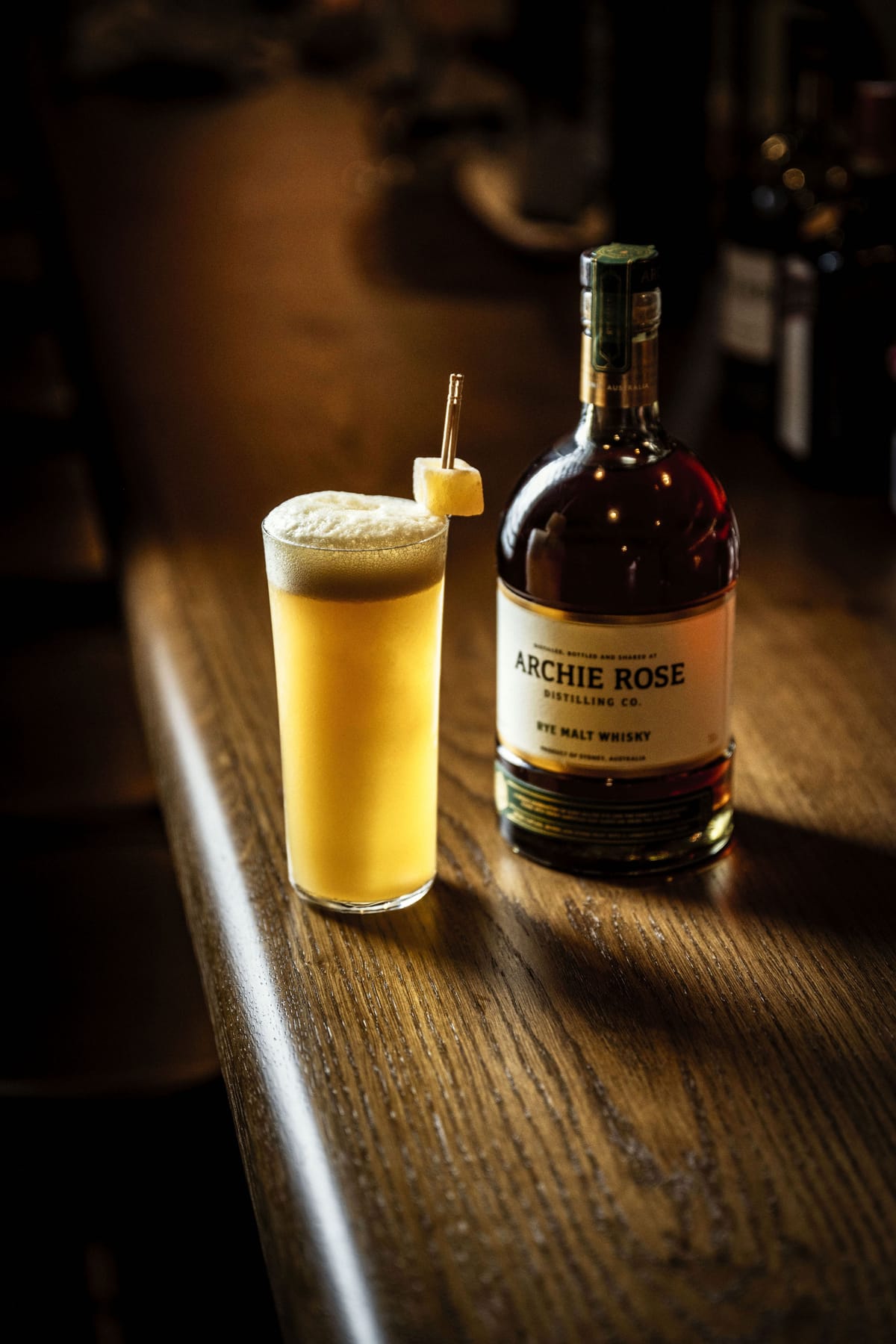Not all rye whiskies are made the same — and that’s certainly the case if Sydney distillery Archie Rose has anything to do with it. Rye whiskey nerds often love the punch and hot spice character you get from traditionally American rye whiskeys, but that sometimes results in too much of a good thing — bigger is not always better.
What’s more, when you’re mixing with them, it can be difficult to get the balance of the drink just right: you need big and punchy accompaniments to big and bold rye.
But there is another way.
Malted rye whiskey isn’t so common in the US, though it is something you’re beginning to see a little more. But Archie Rose isn’t looking to recreate an American style rye; instead they’re working with local producers and setting out on a distinctly Australian path.
There’s some lovely balance to the whisky, whilst still retaining those hallmark characters of rye, that lick of spice and pepper — it’s just a less aggresive, and more refined rye.
Below, we ask Archie Rose’s head of sales, Trevor Hannam, some questions about just how the dram is made, and what makes it unique. Then — and because this is a whisky all its own — we’ve got three classic ways to mix rye that come into their own with this bottling from Archie Rose.

BOOTHBY: What’s the brief history of this bottling — when did it come into being, what was the development process?
TREVOR: We started laying down casks at Archie Rose in February 2015, and Rye Malt Whisky was the first expression to become part of our core range. We officially released the first batch in August 2019. From the outset, our goal was to create something uniquely Australian — not just in flavour, but in philosophy. That meant working with local growers, reviving heritage strains of rye and barley, and innovating in a space that’s traditionally very set in its ways.
Initially, at our original Rosebery distillery, we had to rely on internationally sourced malted rye — there simply wasn’t any available in Australia at the time. But as our partnership with Voyager Malt developed, we began sourcing small parcels of locally grown, climate-adapted rye. That evolution saw the release of expressions like Sandigo Rye and Return to Sandigo, and now, at our purpose-built Banksmeadow distillery, we’re distilling and ageing three distinct streams of Australian-grown rye: malted rye, heritage malted rye, and the uniquely expressive vampire rye. This journey has given us a broader palette of flavour and a whisky that’s deeply and distinctly Australian.
There are two types of malt that go into making the Archie Rose Rye Malt Whisky — can you outline this process and why it’s important to have both?
In all of our rye whisky streams, we use two types of malt: malted rye (either standard malted rye or one of our specialty varieties like heritage or vampire rye) and pale malted barley. Malted rye is notoriously difficult to work with — it’s viscous, lacks husk, and brings serious processing challenges at the distillery. But it’s worth every bit of the effort. It imparts beautifully complex spice and herbal characteristics, with much more elegance and refinement than you’d typically find in whiskies made with unmalted rye.
Then there’s the pale malt, also grown locally and specifically for the Australian climate. It contributes floral, citrus, and biscuity notes that help to soften and balance the rye. The combination creates a whisky that’s bold but approachable — layered, complex, and incredibly drinkable.
Tell us about the air-drying of the virgin American oak casks. Why is it important? What does it add to the whisky?
We use virgin American oak, and go to great lengths to make sure it’s prepared exactly the way we need it — air-dried for 36 months before it’s even coopered into barrels. That slow, natural seasoning process is vital.
Like many decisions in spirits, oak selection comes with a broad spectrum of options. You can opt for wood with minimal seasoning, use kilns to speed up the process, or take the slower, more traditional route of extended outdoor seasoning. It’s a bit like how agave is processed in tequila production — you can use a fast autoclave or go the slower, more expressive route with brick ovens or smoke pits. Each choice affects cost, time, and flavour.
We choose the slow path because it delivers the best results: air-seasoned oak is softer, with reduced tannins and more rounded sweetness. Once seasoned, we toast and char the barrels using a range of profiles, which adds even more depth. The result is a whisky layered with notes of spiced custard, baked apple pie, and soft ginger warmth — a cask profile that enhances the grain rather than overpowering it.
What’s the typical length of the maturation here?
Rye Malt Whisky typically matures for around three to four years, with some casks taking up to seven years to reach maturity. We don’t operate to a fixed age — instead, we assess each cask on its individual merit and bottle it when it’s tasting its best.
We also use a fractional blending system for our core whiskies. That means with every new batch, we hold back a portion of the previous batch to blend into the next one. This system helps build consistency and complexity over time, but it also makes calculating a single average age a little tricky. For example, the last batch of Rye Malt Whisky included casks ranging from four years and 11 months to seven years and two months, with an average age of just over five and a half years.
Sydney’s coastal climate plays a major role in maturation. Hot summers and mild winters mean that whisky generally matures around two to four times faster here than in cooler climates like Scotland — all other things being equal. That said, our new Banksmeadow distillery and expanded warehouse footprint have allowed us to refine every part of the production and maturation process, giving us greater control and enabling us to let some casks mature longer than was previously possible at Rosebery.
Rye whisky can be a challenging spirit for drinkers. Why do you think this one has won so many awards?
Rye definitely has a reputation — bold, spicy, even a little aggressive. But I think what sets ours apart is the attention to detail at every stage of the process. From grain selection and malting to fermentation, distillation, oak treatment, and blending — we prioritise flavour, even when that means more time, effort, or cost.
By using malted rye rather than unmalted, we unlock all the spice and herbal complexity people love in rye, but with much more finesse and depth. The locally grown pale malt barley rounds things out with a delicate floral and biscuity lift. Add to that our carefully sourced, long-seasoned American oak, and a bottling strength of 46% ABV to preserve full character — and you end up with a whisky that’s full of personality, yet incredibly smooth and welcoming. That balance — of power, refinement, and a uniquely Australian character — is what has resonated so strongly with drinkers and judges alike.
How To Use It
Rye calls for classic cocktails. Below, we’ve got two rye-based classics — the Meteor, and the Cablegram, courtesy of The Everleigh cocktail book, A Spot At The Bar — and a whiskified riff on a modern classic, Salvatore Calabrese’s Breakfast Martini.
















